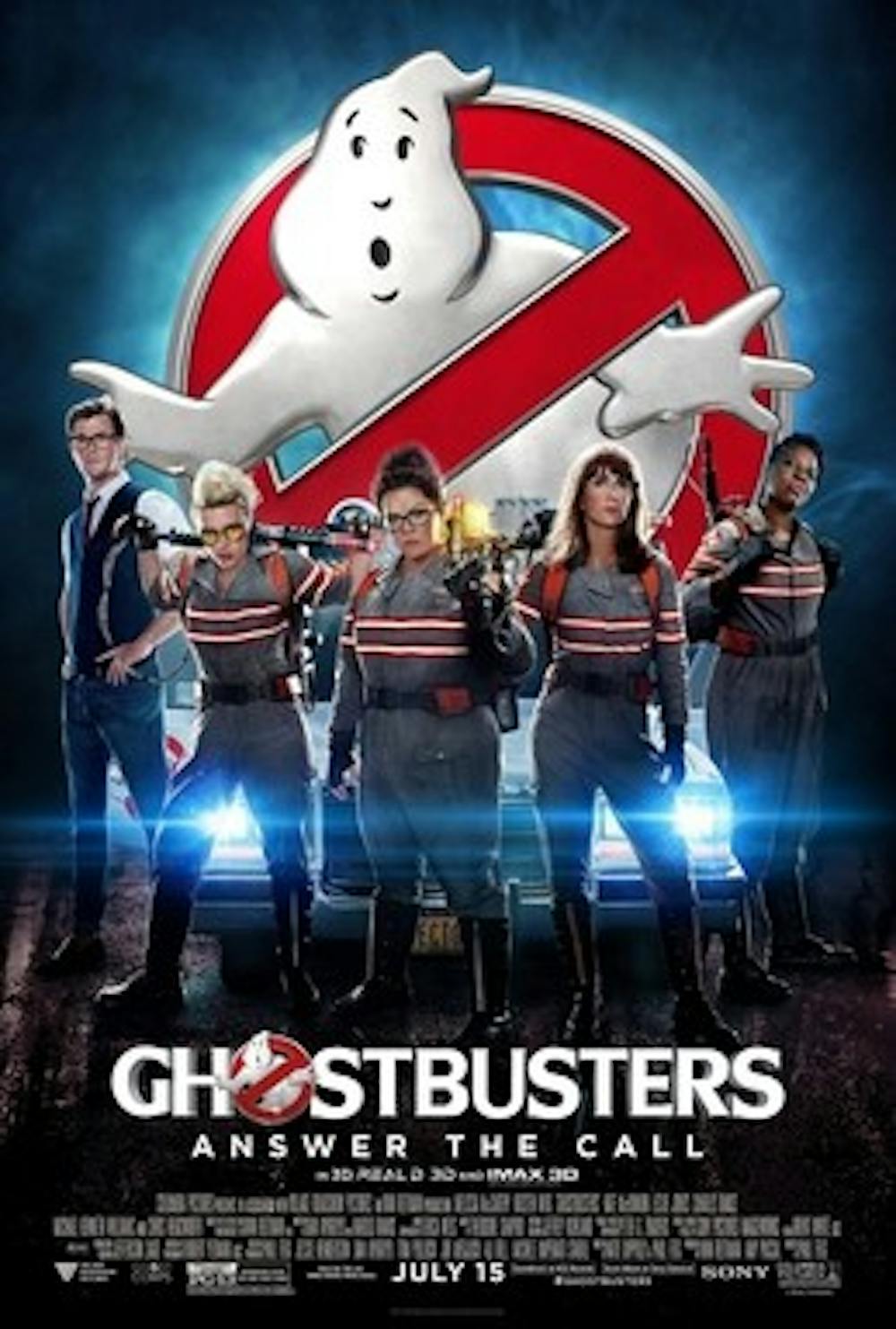After countless controversies, months of outrage and, yes, even death threats to its director and cast, the “Ghostbusters” reboot has finally hit theaters.
At this point one might be asking, “How could a comedy about hunting poorly animated, slime-spewing ghosts possibly elicit any emotions stronger than mild amusement?”
Well, this is an all-female reboot, a fact countless news outlets, bloggers and angry Twitter users seem intent on reminding everybody. Apparently, the decision to reboot a comedy franchise with four well-established, highly respected comedians is a bad thing.
The film begins as Erin Gilbert (Kristen Wiig) — a physics professor anxiously awaiting tenure review at Columbia University — is confronted with a book from her past titled “Ghosts from Our Past: Both Literally and Figuratively: The Study of the Paranormal.” In it, Erin and co-author Abby Yates (Melissa McCarthy) claim ghosts and various paranormal phenomena are definitively real and worth scientific study.
Erin has tried her best to shun her ghost-hunting past and embrace academia, and the book’s untimely resurgence catalyzes the first assembly of the titular tribe. Erin reunites with former best friend Abby and starts “Conductors of the Metaphysical” — a for-hire ghost containment service. She also joins ranks with Abby’s eccentric new research partner, Jillian Holtzmann (Kate McKinnon) in the process.
In a standout performance, McKinnon’s nuanced take on the mad scientist trope is delightfully outrageous and unpredictable. Between transformative facial expressions and dancing with abandon, McKinnon is the driving force behind many of the film’s biggest laughs and most heartwarming moments.
The last to join the team is Patty Tolan (Leslie Jones), a Metropolitan Transit Authority worker who decides to put in a job application after spotting a ghost on the subway tracks. Each of Jones’ lines is flawlessly delivered, carefully playing off every actor in the scene. Though Patty’s temperament resembles many of the characters Jones has played on “Saturday Night Live,” she is the secret sauce that makes the main cast’s chemistry work — a foil to Erin, a complement to Abby, a friend to all.
The film received flak for casting a black actress as the only non-scientist in the core group, but detractors should see the film before they cast aspersions; though not an academic, Patty’s intelligence and cunning are showcased on multiple occasions.
Like Jones, McCarthy and Wiig seem to play characters they have played before, and their more subdued personas manage to hold their own against Jones’ and McKinnon’s antics. Ultimately, not one of the central cast falls short.
Much to the chagrin of misanthropes and misogynists everywhere, four women with impeccable comedic timing came together and successfully made a clever, playful and funny film. It may not be classic cinema, but it has a lot of laugh-out-loud moments and manages to keep you chuckling throughout its climax and resolution — a substantial feat, even for a seasoned comedic filmmaker like Paul Feig.
The writers, Feig and screenwriter Katie Dippold, also took advantage of the opportunity to build responses to the excessive online criticism into the film’s narrative. This is a unique byproduct of having received such massive backlash so early in the production schedule.
Art imitates life as the fictional ghostbusters face intense cynicism and initial scrutiny regarding their accounts of apparitions, and the characters address many of the ways in which the public denigrated their film in real life. Several tongue-in-cheek moments taking aim at hateful YouTube comments and Internet trolls are more clever and self-aware than the numerous nods to the original “Ghostbusters.”
Unfortunately, it appears that being a magnet for Internet vitriol practically since its inception, along with holding the dubious honor of being the most disliked movie trailer in YouTube history, didn’t afford “Ghostbusters” the type of controversy which translates to impressive ticket sales.
The film’s opening weekend saw moderate box office success, grossing $46 million dollars — significantly higher than initial estimates, but still a long way from the film’s $144 million dollar budget. The film’s financial success will likely influence whether studios feel confident investing in more female-driven comedies in the future.
There also remain some “Ghostbusters” detractors who claim their ire is borne not of sexism, but of the desire to protect a classic film of their childhood from corporate corruption. And others profess they are simply tired of unoriginal content.
It would do these “Ghostheads” well to remember that the beloved film has already generated a sequel, a television show, a series of novels, a theme park and an extensive line of merchandise — it’s far from a commercial reproach.
Those claiming general reboot-fatigue should note the following: According to Movie Insider, of the 32 movies getting a nationwide release in the United States in June, July or August, nine are sequels and five are reboots or adaptations — which will likely spawn sequels.
Amid this sea of shameless replication and repurposing, “Ghostbusters” should be the least of anyone’s worries. And if anyone still needs a movie to hate this summer which exemplifies Hollywood executives’ greed and total disregard for creative integrity, please redirect your bitter commentary towards films like “The Angry Birds Movie.”
All in all, “Ghostbusters” is a heartfelt tribute to a pioneering comedic franchise, and its fierce castigation could not have been less justified. Aside from the gender swap, it does not provide much by way of a new twist and it definitely won’t replace the original in the hearts of diehard fans — though it ought to complement it.







